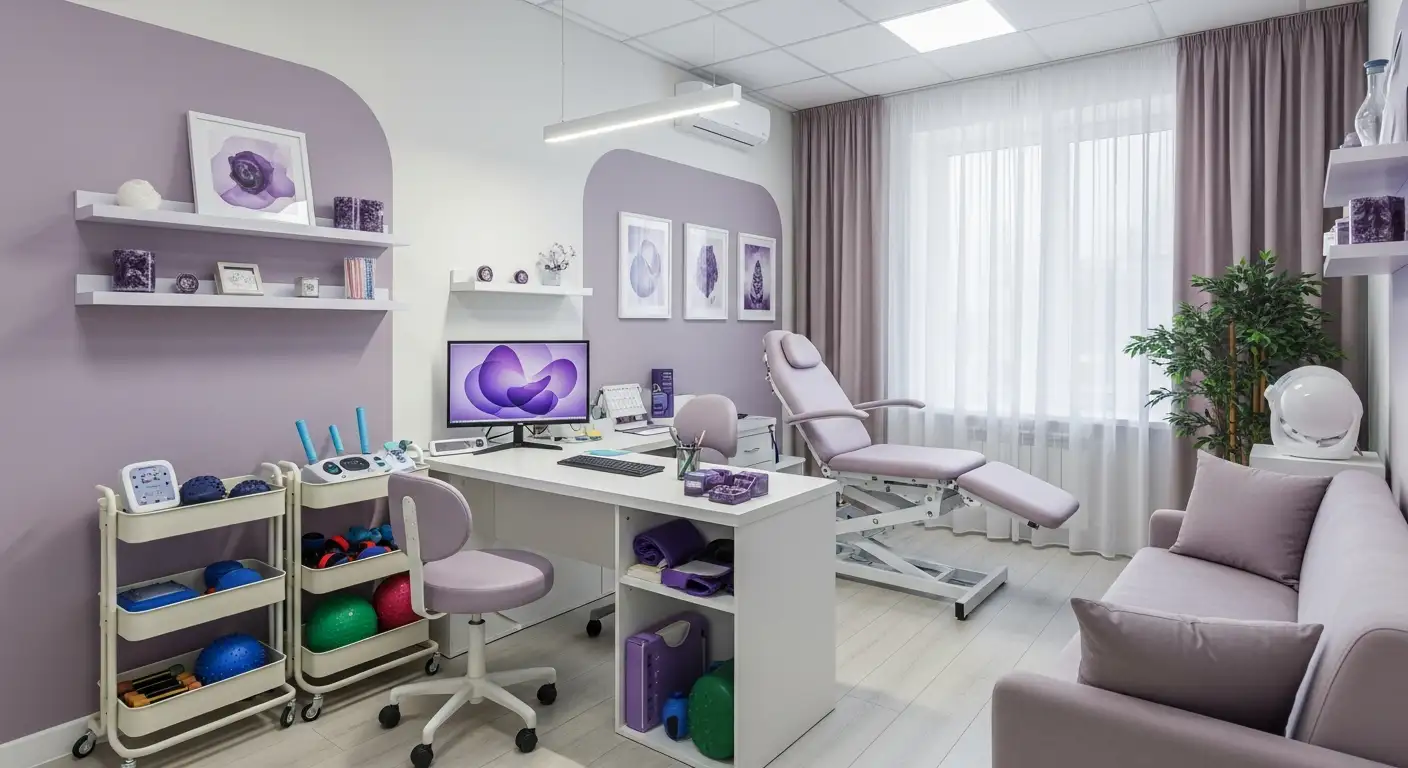Understanding the Challenges and Importance of Toilet Training for Autistic Children
Potty training can present unique challenges for children with autism due to developmental delays, communication difficulties, sensory sensitivities, and the need for structured routines. Recognizing these challenges and applying tailored strategies can significantly enhance the training process, fostering independence and dignity for autistic children. This article explores effective approaches, including behavioral therapies like Applied Behavior Analysis (ABA), environmental adaptations, and professional support, to empower parents and caregivers through the potty training journey.
The Unique Challenges of Potty Training in Children with Autism
What unique factors make potty training challenging for autistic children?
Children with autism often experience developmental delays that slow skill acquisition, impacting their ability to learn toileting routines at the same pace as neurotypical children. Their communication barriers—such as limited verbal abilities—make it harder to understand or express the need to use the bathroom. For example, many autistic children do not display common toileting signals like crossing legs or holding themselves, which makes it tough for caregivers to recognize when they need to go.
Sensory sensitivities also play a major role in potty training difficulties. Many children with autism find aspects of toileting uncomfortable or even distressing, such as bright bathroom lighting, cold toilet seats, loud flushing noises, and certain textures. These sensory challenges can increase anxiety and resistance, making the entire process more stressful for both child and caregiver.
Because of these overlapping factors—developmental delays, communication difficulties, atypical toileting cues, and sensory sensitivities—potty training requires tailored, compassionate approaches that consider each child's unique needs to foster successful learning and independence.
Establishing Readiness and Starting Points for Toilet Training

What signs indicate readiness for potty training in children with autism?
Recognizing when a child with autism is ready to begin potty training is crucial for success. Key signs include the child's ability to communicate their toileting needs using words, gestures, or visual cues. They should be able to follow simple instructions and show interest in bathroom activities. Other readiness indicators include staying dry for longer periods, typically at least two hours, seeking privacy when using the bathroom, and tolerating changes in routine without distress.
Why is consulting healthcare professionals important before starting?
Before initiating toilet training, consulting a pediatrician or general practitioner is recommended. This helps rule out any medical issues—such as urinary tract infections or constipation—that could interfere with progress. Healthcare professionals can also provide guidance tailored to the child's individual needs, ensuring that potty training is started at an appropriate time.
How do physical and communication capabilities affect readiness?
Physical skills such as pulling pants up and down, as well as having regular bowel movements, are essential for effective toilet training. Communication abilities, whether verbal or through alternative means like picture exchange communication systems (PECS), enable children to express their needs and understand instructions. Assessing these skills helps determine when a child is developmentally prepared to begin toilet training.
Starting toilet training based on these readiness cues supports a positive and effective learning experience for children with autism, reducing frustration for both child and caregiver.
Creating Structured and Supportive Toilet Training Routines

Why use predictable schedules and visual aids?
Children with autism benefit significantly from structured and predictable routines due to their preference for consistency. Scheduling regular bathroom visits helps them anticipate toileting times, reducing anxiety and resistance. Visual aids — such as picture schedules, charts, and visual prompts — guide children through the steps involved and reinforce learning by providing clear cues to follow.
How can caregivers contribute to routine consistency?
Routine consistency across all caregivers—parents, teachers, and childcare providers—is crucial for reinforcing toilet training behaviors. When everyone follows the same schedule and uses consistent language and visual supports, it reduces confusion and helps the child generalize toileting skills across settings. Maintaining communication among caregivers ensures that progress and challenges are shared and addressed collaboratively.
What are essential sensory accommodations for individualized plans?
Many autistic children experience sensory sensitivities that can make the toilet environment overwhelming. Tailoring the toileting routine to each child's sensory needs improves comfort and cooperation. This might include using soft lighting instead of harsh fluorescents, providing noise-canceling headphones to reduce flushing sounds, selecting comfortable toilet seats or potty chairs, and incorporating footstools to support proper posture. An individualized plan considers these sensory preferences alongside communication style and behavioral needs, making toilet training more accessible and less stressful for the child.
These combined strategies foster a supportive environment that encourages independence, reduces anxiety, and steadily builds the child's toileting skills with patience and understanding.
Applied Behavior Analysis (ABA) Therapy in Toilet Training

What is Applied Behavior Analysis (ABA) therapy, and how does it help individuals with autism?
Applied Behavior Analysis (ABA) therapy is a scientifically supported method that focuses on analyzing and modifying behaviors through environmental influences. It is widely used to enhance skills and reduce challenges in individuals with autism.
How does ABA apply to skill acquisition in toileting?
In toilet training, ABA breaks down the process into manageable steps tailored to each child's abilities and needs. It uses techniques such as positive reinforcement to encourage desired behaviors, visual schedules to provide structure, prompts to guide actions, and systematic data collection to monitor progress. This approach helps build independence gradually and reduces behaviors that may interfere with successful toileting.
What are the customized behavioral intervention methods used?
ABA strategies for toilet training include:
- Breaking down toileting into small sequential tasks like recognizing the urge, traveling to the bathroom, and using the toilet.
- Utilizing visual supports such as picture schedules or communication devices to signal needs.
- Providing immediate reinforcement with praise or rewards contingent on toileting success.
- Scheduled bathroom visits to build routine and reduce accidents.
- Prompting techniques like "first-then" cues to guide behavior.
- Data-driven adjustments to tailor the program based on individual responses.
A school-based program demonstrated that these methods, implemented even by paraprofessionals with oversight from a Board Certified Behavior Analyst, can lead to mastery of toileting skills in children with autism within an average of 56 school days.
This tailored, consistent, and supportive approach aligns with best practices in behavioral therapy, helping children with autism gain this vital life skill with dignity and independence.
Professionals Delivering ABA Therapy for Toilet Training
Who provides ABA therapy, and what qualifications do professionals typically have?
Applied Behavior Analysis (ABA) therapy for toilet training is provided by a range of qualified professionals. The primary practitioners include Board Certified Behavior Analysts (BCBAs), Board Certified Assistant Behavior Analysts (BCaBAs), and trained therapists. These individuals deliver ABA therapy in diverse settings such as clinics, schools, and specialized companies focused on autism support.
BCBAs are highly trained with graduate-level education in behavior analysis, extensive supervised fieldwork, and successful completion of rigorous certification exams administered by the Behavior Analyst Certification Board (BACB). BCaBAs require less supervised experience but still hold formal credentials and work under the supervision of a BCBA. Therapists delivering ABA interventions may include Registered Behavior Technicians (RBTs) or other trained professionals following specific protocols.
These professionals use evidence-based, individualized interventions designed to meet the unique needs of each child with autism. Their qualifications ensure that the therapy is conducted ethically and effectively, maximizing the child's success in toilet training and other developmental milestones.
Settings where ABA is implemented
ABA therapy is commonly implemented in community-based elementary schools, as well as clinical and home environments. School programs, for example, involve trained paraprofessional staff overseen by BCBAs to carry out structured toilet training interventions. This multidisciplinary and multi-setting approach ensures consistent teaching and generalization of skills across daily routines.
Core ABA Techniques Used in Toilet Training
What are the core components or techniques used in ABA therapy?
Applied Behavior Analysis (ABA) therapy employs several core techniques specifically tailored to support toilet training in children with autism. One primary method is Discrete Trial Training (DTT), which breaks down the complex task of toileting into smaller, manageable steps. This step-by-step approach helps children learn progressively without becoming overwhelmed.
Positive reinforcement plays a crucial role, involving immediate rewards such as verbal praise, small treats, or favorite activities when the child successfully performs a toileting behavior. Prompting strategies — from full physical assistance to subtle verbal cues — are provided and gradually faded as the child gains independence.
Visual supports and behavior chaining further enhance understanding and participation. Visual aids like picture schedules or communication cards (including the PECS system) clarify expectations, while behavior chaining links individual toileting steps (e.g., pulling down pants, sitting on the potty) in a sequence to build a complete routine.
An essential aspect is data-driven progress monitoring. Continuous data collection tracks the child's success rates and challenges, allowing trainers to adjust interventions dynamically based on measurable improvements. Video modeling, natural environment teaching, and consistent reinforcement across settings also form part of an effective ABA toilet training program.
Together, these ABA components create a structured, supportive framework optimized for teaching this vital life skill to children with autism.
Measuring and Evaluating the Success of ABA Toilet Training Interventions
How is the effectiveness of ABA therapy measured and evaluated?
ABA toilet training effectiveness is assessed through systematic data collection focused on specific toileting behaviors. This involves detailed observation and recording of actions like the frequency of successful toilet uses, accident rates, and responses to prompts or visual cues. Such data provide a clear picture of the child's progress toward independent toileting.
Behavioral benchmarks and functional assessments are integral to this process. They help establish targets such as consistent urination in the toilet and ability to follow toileting routines. Clinicians and paraprofessionals regularly review these benchmarks to monitor skill acquisition and identify any regressive patterns.
Adjustment of intervention strategies is based on ongoing data analysis and feedback from caregivers and educators. For example, if progress plateaus or problems arise, the team may modify the reinforcement schedule, introduce new visual supports, or adjust timing for scheduled bathroom visits. This flexible approach ensures the individualized training plan remains effective and responsive to the child’s needs.
Collaborative evaluation involving all stakeholders—therapists, parents, teachers—strengthens the impact of ABA toilet training. It promotes consistency across environments and allows for shared insights that enhance intervention quality.
By combining rigorous data collection, behavioral assessments, and adaptive strategies, ABA programs can effectively measure and improve toilet training outcomes for children with autism.
Environmental and Sensory Considerations in Toilet Training
How Can Adjusting Lighting, Sounds, and Textures Help?
Many children with autism experience sensory sensitivities that can make toilet training stressful. For example, bright bathroom lighting, cold hard toilet seats, loud flushing noises, and uncomfortable surface textures often trigger discomfort or anxiety. Adjusting these environmental factors—such as using soft lighting and minimizing noises—helps create a calming and inviting space where the child feels safe and more willing to participate in toileting routines.
What Comfortable Equipment Supports Toilet Training?
Selecting the right equipment is essential to promote independence and comfort during toilet training. Potty chairs designed for stability and child-friendly size, seat inserts that reduce the cold and hardness of a toilet seat, footstools to support feet and improve posture, and noise-reducing earmuffs can all contribute to a more positive experience. These tools help the child feel physically secure and reduce sensory overload during toilet use.
How to Prepare Children for Sensory Aspects of Toileting?
Introducing children gradually to the sensory experiences involved in toileting is helpful. For example, caregivers can model flushing sounds, let children explore the toilet area at their own pace, and use visual schedules or social stories to explain what to expect. Preparing children with sensory aids like headphones or allowing comfort items can ease transitions and build positive associations. Being mindful of these sensory details supports smoother toileting progress.
| Sensory Factor | Adjustment Strategy | Benefit for Child with Autism |
|---|---|---|
| Bright lighting | Use soft or natural light | Reduces visual overstimulation |
| Loud flushing sounds | Provide noise-cancelling headphones or gradual exposure | Minimizes auditory sensitivity |
| Cold, hard toilet surfaces | Use potty chairs or seat inserts | Increases physical comfort |
| Anxiety about new sensations | Use social stories and gradual introduction | Builds familiarity and reduces fear |
Creating a supportive sensory environment tailored to a child's needs can make toilet training less intimidating and more successful by fostering comfort, safety, and predictability.
Positive Reinforcement and Handling Setbacks

How can reward systems aid in toilet training children with autism?
Reward systems, such as verbal praise and giving small treats, play a significant role in encouraging children with autism during toilet training. Immediate positive reinforcement after successful toileting helps the child associate the behavior with a pleasant outcome, enhancing motivation and learning.
Why is minimizing fuss over accidents important?
Minimizing fuss over accidents prevents creating negative associations with toileting. Children with autism can become easily overwhelmed, and too much attention to accidents can increase anxiety or resistance. Remaining calm and supportive helps maintain a positive learning atmosphere.
How do social stories and video modeling help reduce anxiety in toilet training?
Social stories and video modeling are effective tools for preparing autistic children for the toilet training process. Social stories explain each step of toileting in a simple and predictable way, helping reduce fear and confusion. Video modeling provides visual demonstrations of the steps involved, enabling children to learn by observation, which supports comprehension and compliance.
Using these strategies together—rewarding success, downplaying accidents, and providing clear visual guidance—creates a supportive, encouraging environment that addresses the unique challenges faced by children with autism in toilet training.
Consistency Across Settings and Collaboration Among Caregivers

Why is maintaining routine continuity between home, school, and public settings important?
Maintaining a consistent toilet training routine across home, school, and public environments is crucial for children with autism. These children often rely heavily on predictability and routine to feel secure and understand expectations. Consistency reduces anxiety and confusion, helping them generalize toileting skills across environments.
A structured, predictable routine that is reinforced in all settings enhances learning and promotes independence. This includes timed bathroom visits, use of visual supports like schedules or picture charts, and employing similar communication cues across all caregiver teams.
How can training paraprofessionals and non-clinical staff aid toilet training?
Programs in community-based schools have demonstrated success in teaching paraprofessional staff and other non-clinical personnel evidence-based toilet training procedures. With proper initial training and ongoing oversight by Board Certified Behavior Analysts, these staff members can effectively implement strategies such as scheduled bathroom visits, fluid regulation, and immediate positive reinforcement.
This approach expands support beyond clinical settings and ensures consistent, daily reinforcement of toileting skills during school hours. It also fosters collaboration among caregivers and professionals, reinforcing the child’s learning in multiple contexts.
What strategies help prepare for outings and manage public restroom challenges?
Public restrooms can be intimidating due to sensory sensitivities common in autism, including bright lights, loud flushing, and unfamiliar smells. Gradual exposure and familiarization help ease this transition. Parents should prepare outings by bringing portable potty devices, favorite comfort items, and maintaining routines similar to those at home or school.
Visual supports and social stories designed to explain what to expect in public restrooms can reduce anxiety and improve cooperation. Consistent reinforcement and patience during these experiences build the child's confidence and adaptability.
By fostering collaboration among all caregivers, structuring routines consistently, and preparing for environmental challenges, toilet training progress for children with autism can be significantly enhanced.
Seeking Professional Support and Creating Individualized Plans
When to consult BCBAs and behavioral therapists
Toilet training children with autism can present unique challenges that benefit significantly from professional support. It is recommended to seek assistance from Board Certified Behavior Analysts (BCBAs) or behavioral therapists especially if progress stalls, if the child shows ongoing refusal or distress, or if parents encounter persistent difficulties despite implementing common strategies. Professionals with autism-specific expertise can provide targeted interventions and tailored guidance to move training forward effectively.
Customizing plans based on child’s routines and sensitivities
Individualized toilet training plans are essential since children with autism have different routines, sensory sensitivities, and communication styles. Customization involves assessing the child's readiness signals, accounting for sensory issues like sensitivity to lighting or toilet noises, and building routines that align with their daily lives. Incorporating visual supports, social stories, and gradual introduction of steps tailored to the child's preferences enhances engagement and comfort during training.
Benefits of clinical oversight and data-driven adjustments
Clinical oversight from experienced providers helps maintain consistency and ensures evidence-based practices are followed. For example, a school-based program showed that paraprofessionals, with minimal clinical supervision and data monitoring by a BCBA, could successfully implement structured toilet training. Systematic data collection enables ongoing adjustments to schedules, reinforcement strategies, and cues based on the child’s progress. This data-driven approach fosters mastery, independence, and dignity for children with autism.
Together, collaboration with professionals and customized, responsive plans provide crucial support that aligns with best practices recommended for toilet training children with autism.
Tailored Support and Patience Lead to Success
Potty training an autistic child requires patience, understanding, and a comprehensive approach that combines structured routines, sensory accommodations, and positive behavioral techniques such as ABA. By recognizing readiness signs, employing visual supports and individualized strategies, involving trained professionals, and ensuring consistency across environments, caregivers can empower their children toward independence and dignity. Although setbacks are common, compassionate support and collaboration with experts pave the way for lasting success in this essential life skill.
References
- Seven toilet training tips that help nonverbal kids with autism
- Effective Toilet Training Strategies for Children with Autism
- Potty Training: Successful Tips for Children with Autism
- Toilet Training Children With Autism and Developmental ...
- How to Potty Train an Autistic Child: Therapist's Top Tips
- Toilet training for autistic children
- How to Become an Applied Behavior Analyst (ABA) Therapist
- How to Become an ABA Therapist - School of Education
- Applied Behavior Analysis (ABA)
- How to Measure ABA Therapy's Effectiveness







